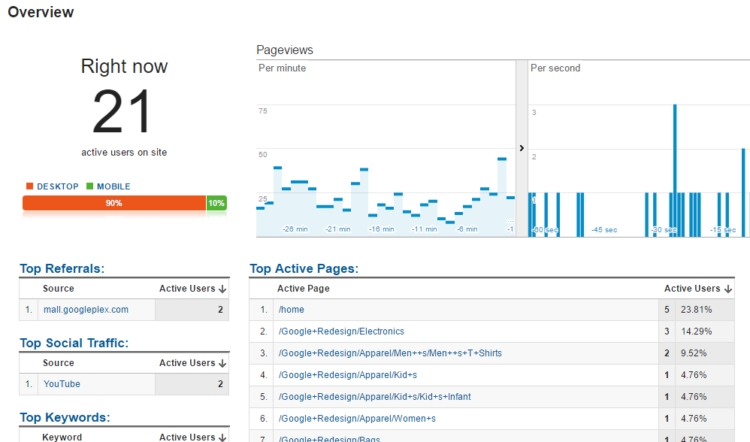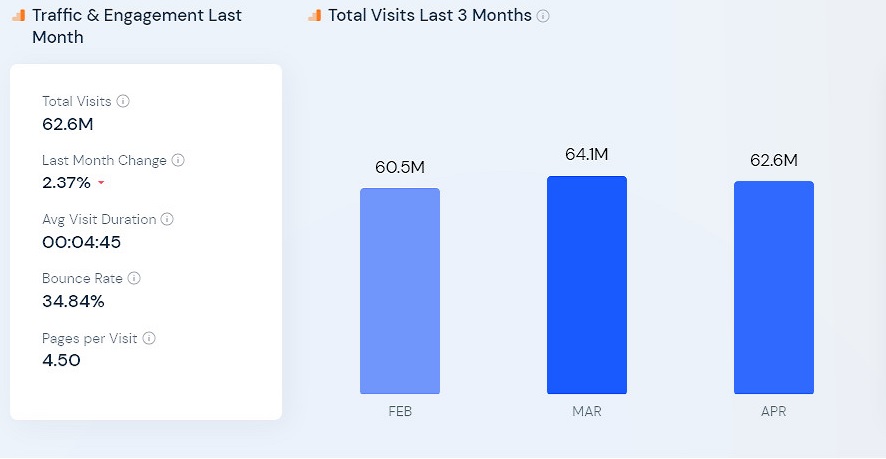On page seo and its steps
Mastering the art of on-page SEO involves a meticulous combination of keyword research, content optimization, technical enhancements, and user experience improvements. By comprehensively addressing each step, you can optimize your website for both search engines and users, leading to higher search rankings, increased organic traffic, and improved online visibility. Remember, on page seo is an ongoing endeavor that requires continuous monitoring, adaptation to algorithm updates, and a commitment to delivering exceptional user experiences. Start implementing these strategies today to witness the transformation of your website’s search engine performance and overall digital success.
In the intricate world of search engine optimization (SEO), on-page optimization stands as a pivotal element that can significantly impact a website’s visibility and ranking on search engine result pages (SERPs). Unlike off-page SEO, which focuses on external factors, on-page SEO involves refining the elements within a website to enhance its performance in search engines. This comprehensive article will delve into the intricate details of all the essential steps encompassing on-page SEO. By exploring the intricacies of these steps, you will gain actionable insights to master this critical aspect of digital marketing.

Keyword Research and Analysis
Keyword research is the foundation of successful on-page SEO. This step involves identifying relevant keywords that align with your content and target audience. A detailed breakdown of this step includes:
- Keyword Discovery:
- Utilize tools like Google Keyword Planner, SEMrush, and Ahrefs to identify potential keywords.
- Consider factors such as search volume, keyword difficulty, and user intent when selecting keywords.
- Long-Tail Keywords:
- Incorporate long-tail keywords that are more specific and relevant to your content.
- Long-tail keywords often have less competition and can attract highly targeted traffic.
- Competitor Analysis:
- Analyze competitors’ websites to identify keywords they are ranking for.
- Discover keyword gaps and opportunities to create unique content.

Content Optimization
Optimizing your content ensures it aligns with both user intent and search engine requirements. This involves crafting high-quality, relevant, and valuable content. The detailed process includes:
- Keyword Placement:
- Strategically place target keywords in the title, headings, subheadings, and throughout the content.
- Maintain a natural flow of content, avoiding keyword stuffing.
- Content Structure:
- Organize your content with clear headings (H1, H2, H3) that provide a hierarchy.
- Use bullet points, numbered lists, and paragraphs to enhance readability.
- Content-Length and Depth:
- Longer, comprehensive content tends to perform well in search rankings.
- Provide in-depth information that addresses user queries thoroughly.
Technical SEO Optimization
Technical aspects of your website impact both user experience and search engine crawlers. A meticulous approach to technical SEO includes:
- Website Speed:
- Optimize images and use browser caching to enhance page loading speed.
- Faster loading pages improve user experience and search rankings.
- Mobile-Friendliness:
- Ensure your website is responsive and displays correctly on mobile devices.
- Google’s mobile-first indexing prioritizes mobile-friendly sites in search results.
- URL Structure:
- Create descriptive, user-friendly URLs that include target keywords.
- Use hyphens to separate words and avoid using unnecessary parameters.
On-Page SEO Elements
Several on-page elements contribute to search engine visibility and user experience. Pay attention to the following aspects:
- Title Tags:
- Craft compelling and relevant title tags that include target keywords.
- Keep titles within 60 characters for optimal display on SERPs.
- Meta Descriptions:
- Write concise meta descriptions that accurately describe the content.
- Include a call-to-action to encourage click-through rates.
- Header Tags:
- Utilize header tags (H1 to H6) to structure content and signal its importance.
- Include the main keyword in the H1 tag and use others to segment content.
- Image Optimization:
- Use descriptive file names for images and include alt text with relevant keywords.
- Optimized images improve accessibility and can appear in image search results.
Internal Linking and Navigation
Internal links improve user navigation, distribute link equity, and establish content hierarchy. A systematic approach involves:
- Contextual Links:
- Embed relevant internal links within your content.
- Ensure the anchor text accurately represents the linked page’s content.
- Navigation Structure:
- Create a logical and user-friendly navigation menu.
- Ensure users can easily access important sections of your website.
- Sitemaps:
- Generate XML and HTML sitemaps to assist search engines in crawling and indexing your site.
- Submit your XML sitemap to Google Search Console for better visibility.
User Experience and Engagement
Providing a positive user experience is paramount for on-page SEO success. Enhance user engagement with the following strategies:
- Readability and Formatting:
- Use legible fonts and appropriate font sizes for easy reading.
- Break content into smaller paragraphs and use subheadings to improve readability.
- Interactive Content:
- Include multimedia elements such as images, videos, and infographics to engage users.
- Visual content can reduce bounce rates and increase time spent on your site.
- Call-to-Action (CTA):
- Incorporate clear and compelling CTAs that guide users to take desired actions.
- CTAs can encourage users to explore more pages, sign up for newsletters, or make purchases.
Employ the H1 tag for the main heading and distribute other headings naturally.
Internal Linking and Navigation
Internal linking constructs an intricate web of connectivity within your website, contributing to user navigation and search engine understanding. Navigating this facet necessitates meticulous planning:
- Contextual Linking Craftsmanship:
- Embed contextually relevant internal links within your content.
- The anchor text should succinctly reflect the content of the linked page.
- Seamless Navigation Architecture:
- Fabricate an intuitive navigation menu that facilitates smooth user movement.
- Users should effortlessly access vital sections of your website for a holistic experience.
- Sitemap Superiority:
- Generate both XML and HTML sitemaps to expedite search engine crawling.
- Submit your XML sitemap to Google Search Console for heightened indexing efficiency.
User Experience and Engagement
Ensuring an unparalleled user experience stands as a pivotal on-page SEO objective. Elevating user engagement and satisfaction entails a meticulous blend of strategies:
- Readability Refinement:
- Opt for legible fonts and appropriate font sizes to enhance reading ease.
- Break content into well-structured paragraphs and leverage subheadings for logical flow.
- Multimedia Enchantment:
- Embellish content with multimedia elements like images, videos, and infographics.
- Visual stimuli reduce bounce rates, prolong session durations, and enhance user engagement.
- Compelling Call-to-Action Conjuring:
- Infuse persuasive calls-to-action (CTAs) that entice users to take desired actions.
- CTAs can prompt users to explore more pages, sign up for newsletters, or make purchases.

Image Optimization Artistry:
-
- Integrate images with descriptive file names and alt text enriched with pertinent keywords.
Optimized images enhance accessibility and potentially rank in image search results.
Schema Markup and Rich Snippets
Implementing schema markup enhances how search engines understand and display your content in SERPs. This advanced step involves:
- Schema Markup Implementation:
- Utilize structured data markup, such as Schema.org, to provide context about your content.
- Enhance search engine understanding of your content’s type, relevance, and attributes.
- Rich Snippets Enhancement:
- Incorporate schema markup to enable rich snippets, which display additional information in search results.
- Rich snippets can boost click-through rates by offering users more relevant details upfront.
Page Speed Optimization
Page speed is a critical factor for both user experience and search engine rankings. This technical optimization demands meticulous attention:
- Compression and Minification:
- Compress images and minify code to reduce page size and boost loading speed.
- Efficient coding practices contribute to swifter loading times.
- Server Response Time Optimization:
- Ensure your web hosting and server configuration facilitate rapid response times.
- A swift server response is essential for delivering content promptly to users.
URL Structure and Permalink Optimization
Creating clean, user-friendly URLs contributes to both user experience and search engine interpretation. Achieving this involves:
- Descriptive URL Paths:
- Formulate URLs that convey the content’s subject and hierarchy.
- Users and search engines should understand the content from the URL itself.
- Keyword Integration:
- Seamlessly integrate relevant keywords into URLs for added optimization.
- Well-structured URLs can impact search visibility and click-through rates.
Content Freshness and Updates
Regularly updating and refreshing your content keeps it relevant and valuable to users. This ongoing effort encompasses:
- Regular Content Review:
- Periodically review and update existing content to reflect the latest information.
- Content freshness signals to search engines that your site is active and authoritative.
- Timestamps and Last-Updated Dates:
- Display timestamps or last-updated dates on articles to signify recent updates.
- Users and search engines appreciate up-to-date content.
Monitoring and Analytics
Continuously monitoring your on-page SEO efforts is crucial for optimization and improvement. Vigilant monitoring entails:
- Analytics Integration:
- Integrate platforms like Google Analytics to track user behavior and engagement.
- Analyze metrics such as bounce rate, time on page, and conversion rates.
- Regular Audits and Adjustments:
- Conduct regular SEO audits to identify areas for improvement.
- Adjust your strategy based on data insights and algorithm updates.
Mobile Optimization
In the age of mobile dominance, ensuring your website is optimized for mobile devices is crucial for both user experience and search engine rankings. This step involves:
- Responsive Design:
- Design your website to adapt seamlessly to different screen sizes and devices.
- A responsive design ensures that users have a consistent and user-friendly experience across platforms.
- Mobile Page Speed:
- Prioritize fast loading times on mobile devices.
- Optimize images and minimize code to enhance mobile page speed.
- Mobile-Friendly Features:
- Implement touch-friendly buttons, fonts, and navigation elements.
- Users should be able to navigate and interact with your website effortlessly on mobile devices.
User Engagement Metrics
Search engines consider user engagement metrics as indicators of content quality and relevance. Monitoring and enhancing these metrics is essential:
- Bounce Rate Management:
- A high bounce rate indicates users are leaving your site quickly.
- Create compelling content, improve page load speed, and enhance user experience to reduce bounce rates.
- Dwell Time Enhancement:
- Dwell time refers to the time users spend on your page after clicking a search result.
- Engaging content, multimedia elements, and a clear structure can increase dwell time.
- Click-Through Rate (CTR) Improvement:
- A higher CTR signifies that your content’s title and description are enticing.
- Craft compelling meta titles and descriptions that align with user intent.
Content Accessibility and Indexability
Ensuring that search engines can access and understand your content is fundamental. This step involves:
- Robots.txt and Sitemap Configuration:
- Use a robots.txt file to guide search engines on which parts of your site to crawl.
- Submit an XML sitemap to search engines to aid in content discovery and indexing.
- Canonicalization:
- Implement canonical tags to prevent duplicate content issues.
- Canonical tags specify the preferred version of a page when there are multiple variations.
- Noindex Tags:
- Use noindex tags for pages you don’t want search engines to index.
- This prevents irrelevant or duplicate content from appearing in search results.
HTTPS Implementation
Website security has become a ranking factor. Transitioning to HTTPS ensures data security and search engine trust. The process includes:
- SSL Certificate Installation:
- Acquire and install an SSL certificate to enable HTTPS encryption.
- SSL certificates protect user data and provide a secure browsing experience.
- Update Internal Links:
- Update internal links to use HTTPS URLs instead of HTTP.
- This ensures a consistent and secure user experience across your site.
Local SEO Optimization
For businesses targeting a local audience, local SEO optimization is essential. This step involves:
- Google My Business Setup:
- Create or claim your Google My Business listing and provide accurate business information.
- Optimized GMB profiles improve local search visibility and attract local customers.
- Local Citations:
- List your business in local directories, ensuring consistent NAP (Name, Address, Phone) information.
- Local citations enhance your business’s credibility and prominence in local searches.
User-Centric Optimization
Prioritizing user needs and experience contributes to better search engine rankings. This step involves:
- User-Centric Keyword Usage:
- Create content that genuinely addresses user queries and concerns.
- User-focused content tends to attract more engagement and shares.
- Semantic SEO:
- Incorporate semantically related keywords and concepts in your content.
- This showcases your content’s comprehensiveness and relevance to search engines.
A comprehensive understanding of on-page SEO entails a meticulous mastery of each intricate step. By immersing yourself in these multifaceted strategies, you transcend conventional optimization and orchestrate an unparalleled symphony that resonates with both users and search engines. The culmination of these efforts manifests in elevated search rankings, amplified organic traffic, and an unshakable digital presence. However, the journey towards on-page SEO excellence is unceasing, necessitating adaptability, constant vigilance, and an unwavering commitment to delivering exceptional user experiences. Commence the integration of these strategies into your approach today, and bear witness to the evolution of your website’s search engine prominence and overall digital triumph.
Mastery of on-page SEO transcends mere optimization; it’s an orchestration of meticulously crafted strategies that align user expectations with search engine algorithms. By immersing yourself in each of these comprehensive steps, you create a symphony that resonates with both users and search engines alike. The culmination of these efforts materializes in elevated search rankings, increased organic traffic, and an unshakable digital presence. However, the journey towards on-page SEO excellence remains perpetual, demanding adaptability, vigilance, and a relentless commitment to delivering unmatched user experiences. Begin weaving these strategies into your approach today, and witness the evolution of your website’s search engine prowess and overall digital triumph.
Embarking on the journey of mastering on-page SEO demands a meticulous fusion of keyword research, content optimization, technical finesse, and user-centric enhancements. By meticulously traversing each of these comprehensive steps, you orchestrate a symphony that harmonizes user preferences with search engine algorithms. This meticulous approach culminates in elevated search rankings, amplified organic traffic, and an unshakable online prominence. The pursuit of on-page SEO excellence, however, is an ongoing endeavor necessitating vigilance, adaptability, and an unwavering commitment to delivering unparalleled user experiences. Begin immersing yourself in these strategies today, and bear witness to the metamorphosis of your website’s search engine prowess and overall digital triumph.






